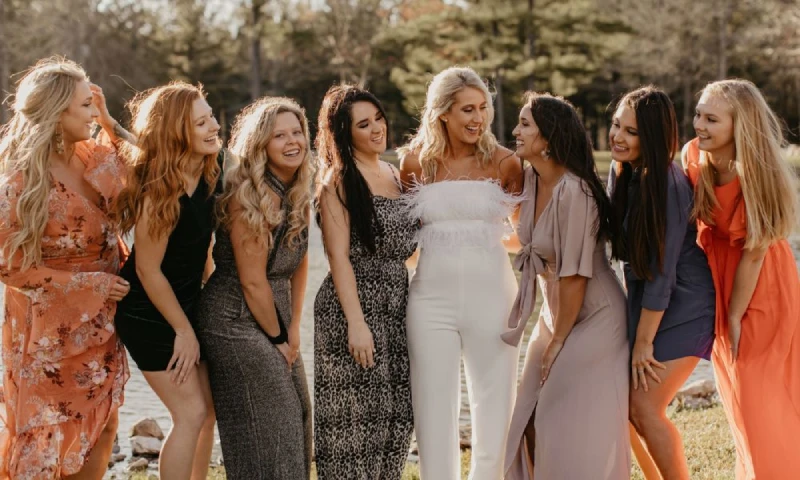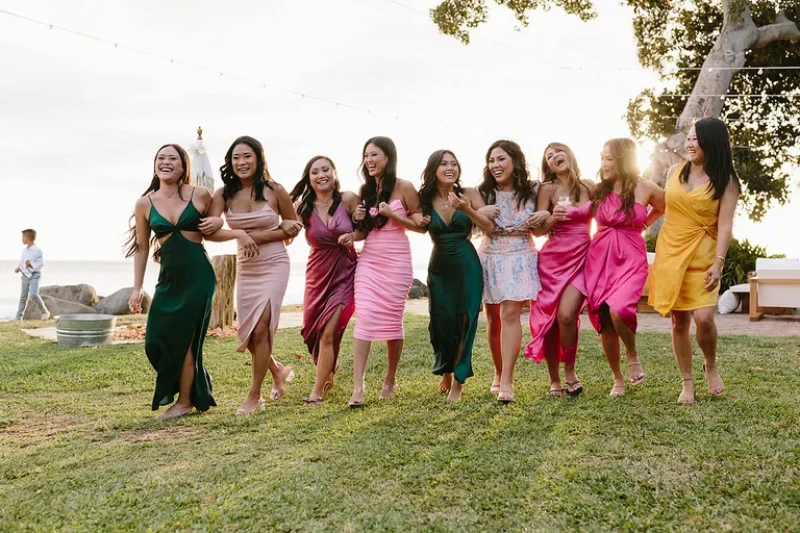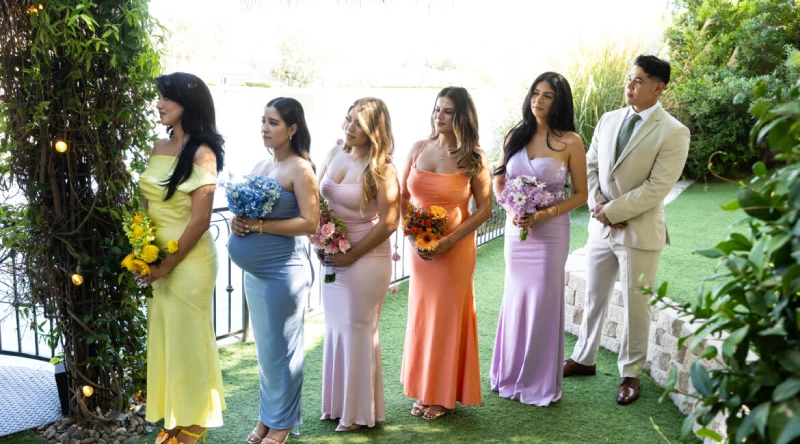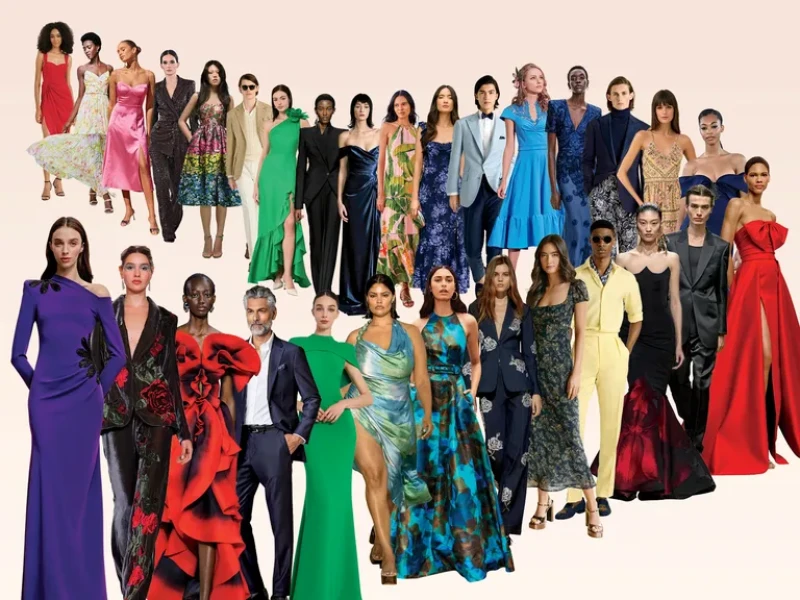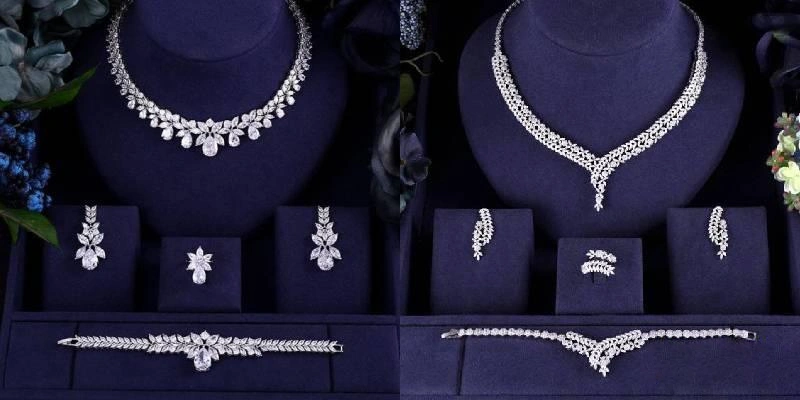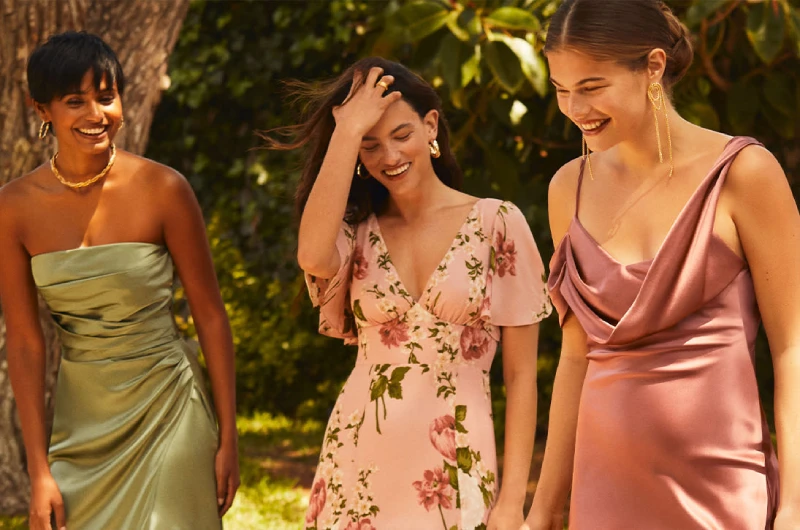Attending a Persian wedding abroad is not just an invitation to witness a beautiful celebration; it’s an opportunity to immerse yourself in a rich tapestry of culture, color, and tradition. As a guest, what you wear can enhance your experience and show respect for the ceremony while embracing the joyous atmosphere. Persian weddings are characterized by their elaborate decor and vibrant attire, making it essential to choose an outfit that reflects the elegance of the occasion. From elegantly tailored suits to flowing gowns decorated with intricate patterns, every detail counts. Whether you’re a close friend or a tenderly invited guest, understanding the cultural nuances of wedding attire will help you navigate your fashion choices skillfully. In this guide, we’ll explore the quintessential styles and tips to help you dazzle on this momentous day, celebrating love amid cherished traditions. So, grab your notepad and get ready to make a stunning impression at a Persian wedding!
Understanding the Dress Code at a Persian Wedding
Attending a Persian wedding abroad requires an understanding of the cultural significance and traditions that dictate the dress code. Persian weddings are renowned for their opulence, elegance, and the celebration of intricate customs. The attire worn by guests is a reflection of respect towards these traditions and the couple’s heritage. Typically, the dress code for a Persian wedding is formal, often leaning towards black-tie, with an emphasis on sophistication and attention to detail.
The formality of the event means that guests are expected to dress in their finest attire. For women, this often translates to long gowns or elegant cocktail dresses adorned with intricate patterns or embellishments. The choice of fabric can range from luxurious silks to delicate lace, each adding a different layer of elegance to the ensemble. Men, on the other hand, are expected to don well-tailored suits or tuxedos, complete with dress shoes and often a tie or bow tie. The overall appearance should be polished and refined, reflecting the grandiose nature of the celebration.
It’s important to note that the level of formality can sometimes be indicated on the invitation. Some Persian weddings may have specific themes or dress codes mentioned, such as “black tie” or “cocktail attire.” Paying close attention to these details can help ensure that your outfit aligns perfectly with the couple’s vision for their special day. Understanding the dress code not only helps you fit in seamlessly but also shows respect for the cultural significance of the event.
Traditional vs Modern Guest Attire for Persian Celebrations
The attire for Persian weddings can vary widely between traditional and modern styles, each carrying its own charm and cultural significance. Traditional Persian attire often features vibrant colors, elaborate embroidery, and flowing fabrics that symbolize the rich cultural heritage of Persia. For women, this could mean wearing a traditional Persian dress called a “manteau” or an “abaya,” often paired with a headscarf or “rusari.” These garments are usually made from luxurious materials and adorned with intricate designs that reflect the artistry of Persian culture.
Men’s traditional attire might include a “pirahan” (a long shirt) paired with “shalvar” (trousers) and a “kolah” (hat). These outfits are typically crafted from fine materials and may feature detailed embroidery or decorative elements. Traditional attire not only highlights the cultural roots but also adds a unique and authentic touch to the celebration. However, it’s essential to confirm with the hosts if traditional clothing is appropriate or preferred for the particular wedding you are attending.
Modern guest attire, on the other hand, tends to align more closely with Western formal wear but still incorporates elements of Persian elegance. Women might opt for evening gowns or sophisticated dresses with modern cuts and styles, yet still choose fabrics and patterns that echo Persian aesthetics. Men may wear contemporary suits or tuxedos, often with subtle details like Persian-inspired cufflinks or pocket squares. The modern approach allows guests to honor their personal style while still respecting the cultural context of the wedding.
What Female Guests Should Wear to a Persian Wedding Abroad
Female guests attending a Persian wedding abroad have the delightful task of selecting an outfit that is both elegant and culturally respectful. The key is to choose attire that is formal, sophisticated, and, if possible, infused with elements of Persian design. Long gowns are a popular choice, as they exude grace and fit well with the formal nature of Persian weddings. Opt for dresses made of luxurious materials like silk, chiffon, or satin, which drape beautifully and add a touch of opulence to your look.
Embroidery and embellishments are significant in Persian fashion, so consider gowns with intricate beadwork, sequins, or lace detailing. These elements not only enhance the beauty of your outfit but also pay homage to the elaborate designs found in traditional Persian garments. If you prefer a more modern look, a well-tailored cocktail dress can also be appropriate, provided it maintains a level of formality and elegance. When choosing a dress, be mindful of the neckline and length; modesty is often appreciated, so avoid overly revealing styles.
In addition to the dress, accessories play a crucial role in completing your ensemble. Statement jewelry, such as chandelier earrings, ornate bracelets, or a sparkling clutch, can elevate your look and add a touch of glamour. However, it’s important to strike a balance and avoid over-accessorizing. A few carefully chosen pieces can complement your outfit without overshadowing it. Finally, consider your footwear; elegant heels or dressy sandals are ideal, but ensure they are comfortable enough to last through the festivities, which can often extend late into the night.
What Male Guests Should Wear to a Persian Wedding Abroad
For male guests, dressing for a Persian wedding abroad involves selecting attire that is both stylish and respectful of the occasion’s formality. A well-fitted suit or tuxedo is the cornerstone of a man’s outfit for such an event. Dark colors like black, navy, or charcoal gray are classic choices that convey sophistication and elegance. If the wedding invitation specifies “black tie,” a tuxedo with a bow tie is appropriate. Otherwise, a suit with a dress shirt and tie will suffice.
The fit of the suit is crucial; it should be tailored to your body to ensure a sharp and polished appearance. Pay attention to the details, such as the quality of the fabric, the cut of the jacket, and the fit of the trousers. A well-tailored suit not only looks more refined but also highlights your respect for the formality of the event. Pair your suit with a crisp dress shirt, preferably in a classic color like white or light blue. Adding a tie or bow tie that complements your suit is essential, as it completes the formal look.
Accessories can also enhance your attire, adding subtle touches of personality and style. Consider wearing cufflinks, a pocket square, or a sleek watch. These small details can make a significant impact and show that you have taken the time to dress thoughtfully. When it comes to footwear, select a pair of polished dress shoes, such as oxfords or loafers, in a color that matches your suit. Comfort is key, as Persian weddings often involve dancing and extended celebrations, so ensure your shoes are both stylish and comfortable.
Colors to Wear—and Avoid—at a Persian Wedding
Choosing the right colors for your outfit is crucial when attending a Persian wedding. These events are known for their vibrant and festive atmosphere, and the colors you wear can enhance your experience while showing respect for cultural traditions. Traditionally, bright and rich colors are favored, as they symbolize joy, prosperity, and celebration. For women, jewel tones like emerald green, sapphire blue, ruby red, and royal purple are excellent choices. These colors not only stand out beautifully but also complement the opulent decor and festive spirit of the occasion.
Men can also incorporate color into their attire, though typically in more subtle ways. A dark suit in black, navy, or charcoal gray can be paired with a tie or pocket square in a bold color or pattern. This adds a touch of personality without overpowering the overall look. Earth tones, such as deep greens and browns, can also be a good choice, provided they are styled in a way that maintains the formality of the event. Avoid overly bright or neon colors, as they can be too casual and may not align with the sophisticated atmosphere of a Persian wedding.
While many colors are welcomed, there are a few to avoid. White is traditionally reserved for the bride, and wearing it can be seen as disrespectful or as an attempt to upstage her. Black, although often considered elegant and formal, is sometimes associated with mourning in Persian culture, so it’s best to clarify with the hosts if it is appropriate. Additionally, bright reds can be tricky, as they are often associated with the bride’s clothing in traditional Persian weddings. When in doubt, opt for colors that are vibrant yet respectful, ensuring your outfit adds to the celebratory ambiance.
How Dress Codes Vary by Country and Venue
Persian weddings abroad can vary significantly depending on the country and venue where they are held. Understanding these variations is essential for selecting the appropriate attire. In countries with a strong Persian community, traditional dress codes may be more prevalent, and guests might be expected to wear traditional Persian attire or incorporate traditional elements into their outfits. In such cases, it’s best to consult with the hosts or other attendees to ensure your outfit aligns with local customs and expectations.
Venues also play a critical role in determining the dress code. A wedding held in a grand ballroom or luxury hotel often calls for more formal attire, such as evening gowns and tuxedos. The opulent setting sets the tone for a sophisticated and elegant dress code. In contrast, a wedding held in an outdoor garden or beach setting might allow for slightly more relaxed attire. However, even in these settings, maintaining a level of formality is important. Think along the lines of elegant sundresses for women and lightweight suits for men, ensuring that you still look polished and respectful of the occasion.
Additionally, the time of year and local climate can influence your outfit choices. For weddings in warmer climates, opt for lighter fabrics like silk, chiffon, or linen to stay comfortable while maintaining a formal appearance. In cooler climates, consider layering with a stylish shawl or jacket that complements your outfit. Being mindful of these factors ensures that you are not only appropriately dressed but also comfortable throughout the event, allowing you to fully enjoy the celebration.
Accessory Tips for Looking Elegant Without Overdoing It
Accessories are the finishing touches that can elevate your outfit from simple to stunning, but they must be chosen carefully to avoid overdoing it. For female guests, statement jewelry can be a great way to add a touch of glamour. Opt for pieces that complement your dress without overwhelming it. A pair of chandelier earrings, a sparkling bracelet, or a delicate necklace can add just the right amount of elegance. If your dress is heavily embellished, consider more understated jewelry to keep the overall look balanced.
Handbags are another important accessory. A small, elegant clutch is ideal for a Persian wedding, as it adds a touch of sophistication without being cumbersome. Choose a bag that coordinates with your outfit, either in a matching color or a complementary metallic shade. Avoid large or casual bags, as they can detract from the formality of your ensemble. When it comes to shoes, elegant heels or dressy sandals are the way to go. Ensure they are comfortable enough to wear throughout the event, as Persian weddings often involve extended periods of standing and dancing.
For male guests, accessories should enhance the outfit without drawing too much attention. A sleek watch, a pair of cufflinks, and a pocket square can add a touch of sophistication to a suit or tuxedo. When selecting a tie, choose one that complements the color and style of your suit. Patterns can add interest, but they should be subtle and elegant. Shoes should be polished and formal, such as oxfords or loafers. Paying attention to these details ensures that your overall look is cohesive and elegant, without appearing overdone.
Outfit Ideas for Multi-Day Persian Wedding Events
Persian weddings often span multiple days, with each event requiring a different level of formality and style. Planning your outfits for these multi-day celebrations can be both exciting and challenging. For the “Mehmoonee” (pre-wedding party), which is usually less formal, you can opt for a stylish cocktail dress or a chic jumpsuit. Men can wear a smart casual outfit, such as dress pants paired with a blazer and dress shirt. This event is a great opportunity to showcase your personal style while still looking polished.
The main wedding ceremony, or “Aghd,” is the most formal event, requiring your most elegant attire. Women should consider wearing a long evening gown or a sophisticated dress with intricate detailing. Men should opt for a tuxedo or a well-tailored suit. This is the time to bring out your most luxurious accessories, from sparkling jewelry to polished dress shoes. The reception, or “Jashn-e-Aroosi,” which follows the ceremony, is also formal but often includes more dancing and festivities. Ensure your outfit is comfortable enough for dancing while still maintaining a high level of elegance.
For the “Sofreh Aghd” (traditional Persian wedding table) event, which may take place on a separate day, semi-formal attire is typically appropriate. Women can wear a knee-length dress or an elegant skirt and blouse, while men can opt for a suit without a tie. The “Rooz-e-Aroosi” (day-after celebration) is usually more relaxed, allowing for smart casual attire. Women might choose a stylish sundress or a sophisticated pair of trousers and a blouse, while men can wear dress pants with a dress shirt or polo. Planning your outfits for these events ensures that you are appropriately dressed for each occasion, allowing you to fully enjoy the festivities.
Comfort Meets Culture: Dressing Smart for Destination Weddings
Dressing for a destination Persian wedding requires a balance between comfort and cultural sensitivity. The location can significantly influence your outfit choices, so it’s essential to consider the climate and setting. For weddings in warm, tropical destinations, choose lightweight fabrics like silk, chiffon, or linen to stay cool while maintaining a formal appearance. Women can opt for flowing gowns or elegant sundresses, while men can wear lightweight suits or dress pants paired with a dress shirt and blazer.
In cooler climates, layering is key to staying comfortable while still looking stylish. Women can add a shawl or wrap to their outfit, which not only provides warmth but also adds a touch of elegance. Men can consider wearing a stylish overcoat or a tailored jacket. Regardless of the climate, it’s important to ensure that your outfit is comfortable enough to wear throughout the event. Persian weddings often involve extended periods of standing, dancing, and socializing, so choose footwear that is both stylish and comfortable.
Cultural sensitivity is also crucial when dressing for a Persian wedding abroad. Be mindful of local customs and traditions, and aim to dress in a way that shows respect for the cultural context. Avoid overly revealing or casual attire, and opt for outfits that are elegant and sophisticated. When in doubt, consult with the hosts or other guests to ensure that your outfit aligns with the cultural expectations of the event. By balancing comfort and cultural sensitivity, you can fully enjoy the destination wedding experience while looking stylish and respectful.
Conclusion and Final Thoughts on Attire Choices
Attending a Persian wedding abroad is a unique and enriching experience, offering a glimpse into the vibrant culture and traditions of Persia. Your attire plays a significant role in not only enhancing your own experience but also showing respect for the couple and their heritage. By understanding the dress code, choosing the right colors, and thoughtfully selecting your accessories, you can create an outfit that is both elegant and culturally appropriate.
Whether you opt for traditional Persian attire or a modern, sophisticated look, the key is to dress in a way that reflects the formality and opulence of the occasion. Pay attention to the details, from the fit and fabric of your outfit to the accessories that complete your ensemble. Consider the variations in dress codes based on the country and venue, and plan your outfits for multi-day events to ensure you are appropriately dressed for each occasion.
Ultimately, dressing for a Persian wedding abroad is about finding the perfect balance between elegance, comfort, and cultural sensitivity. By following the guidelines outlined in this guide, you can confidently navigate your fashion choices and make a stunning impression at the wedding. Embrace the opportunity to celebrate love and tradition, and enjoy the rich cultural experience that a Persian wedding offers.

